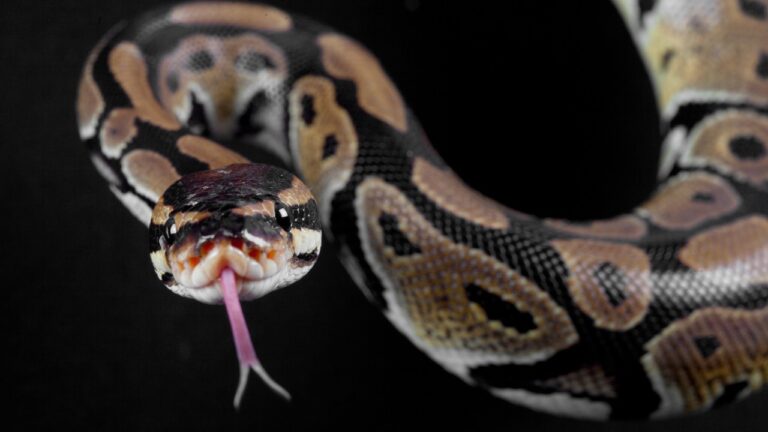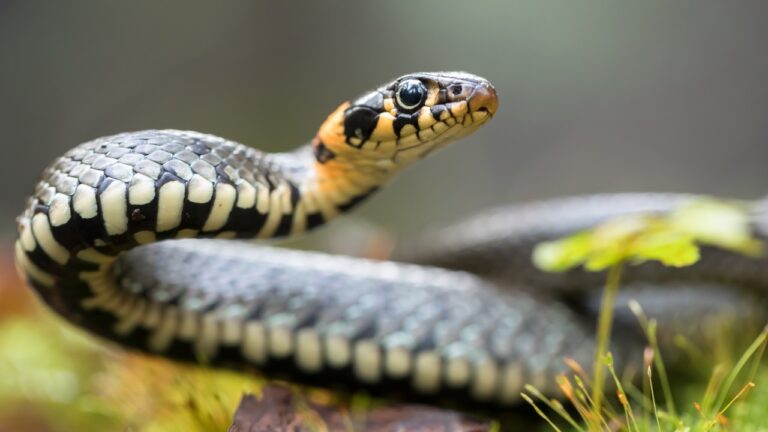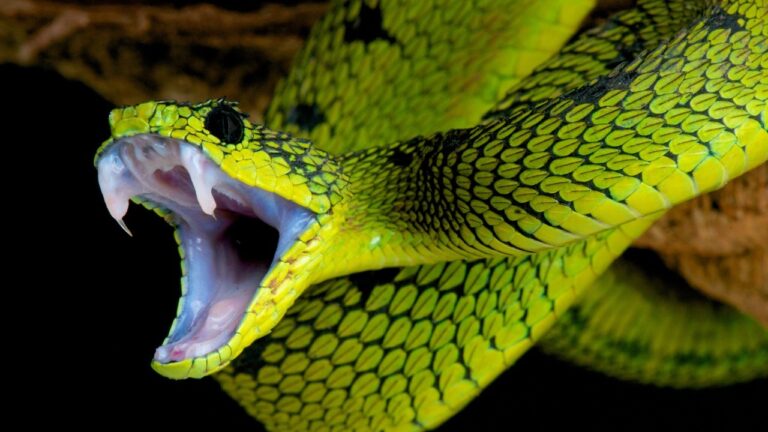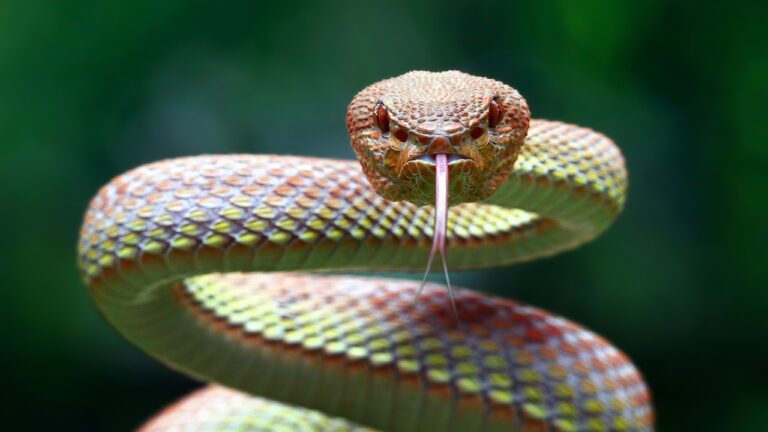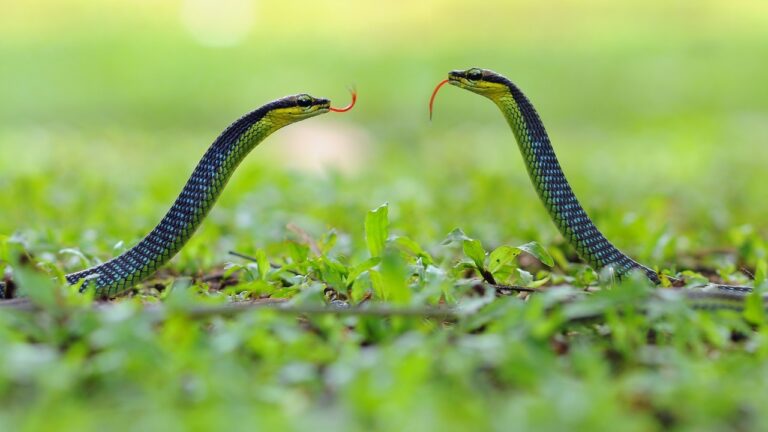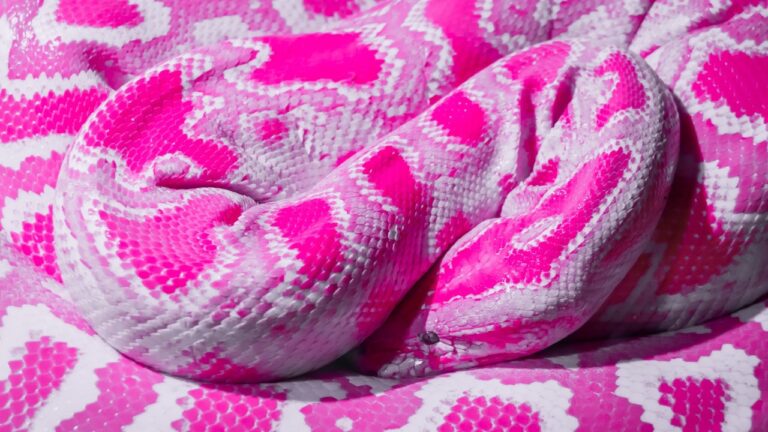The Ultimate Guide: Best Snake Food for Expert Preparation
When it comes to keeping a snake as a pet, providing the best snake food is essential for their health and well-being. Choosing the right food for your slithery companion not only ensures their nutritional needs are met but also contributes to their overall vitality. In this comprehensive guide, we will delve into the world of snake feeding and explore the various options available. Whether you’re a seasoned snake owner or a newcomer to the reptile realm, this article will equip you with the knowledge you need to make informed decisions about your snake’s diet.
Importance of choosing the best snake food
Just like humans, snakes have specific dietary requirements that must be met to support their growth, development, and overall health. Feeding your snake a well-balanced diet is crucial for their longevity and vitality. A proper diet ensures that snakes receive the necessary nutrients, vitamins, and minerals they need to thrive.
Choosing the best snake food is not solely about providing sustenance; it also affects their behavior and temperament. A snake that is well-fed and content is more likely to be docile and less prone to aggression, making handling and interaction more enjoyable for both owner and snake.
Overview of the article
In this article, we will explore the different types of snake food available, including live prey, frozen/thawed prey, pre-killed prey, and even homemade diets. We will discuss the factors to consider when selecting snake food, such as the nutritional requirements of different snake species, the size and type of snake, availability and convenience, and cost.
Furthermore, we will delve into the best snake food options, including mice, rats, birds, and other small animals that can provide a balanced diet for your scaly friend. We will also provide feeding techniques and tips, such as proper handling of snake food, establishing a feeding schedule, and monitoring your snake’s health and weight.
To ensure you are well-equipped to care for your snake, we will highlight common mistakes to avoid when feeding your pet, including overfeeding, inadequate prey size, and providing poor quality or unbalanced diets.
By the end of this guide, you will have a comprehensive understanding of the best snake food options available, as well as the knowledge and confidence to make informed decisions about your snake’s diet. So, let’s dive into the fascinating world of snake nutrition and ensure your slithering companion receives the best care possible.
Types of Snake Food
When it comes to feeding our slithering friends, there are several options to consider. Each type of snake food has its own advantages and disadvantages, so it’s important to choose the one that best suits your snake’s needs. From live prey to homemade diets, let’s explore the various options available.
Live Prey
Live prey is the most natural option for snakes, as it allows them to exhibit their natural hunting behaviors. This type of food includes live rodents, such as mice and rats, or even small birds. Many snake owners prefer this method as it provides mental stimulation for their serpentine companions. However, there are some drawbacks to consider. Live prey can potentially injure or bite your snake, and there is a risk of introducing parasites or diseases. Additionally, finding a reliable source of live prey can sometimes be challenging.
Frozen/Thawed Prey
For those who prefer a safer option, frozen/thawed prey is a popular choice. This method involves purchasing pre-killed rodents or birds, which are then frozen and thawed before feeding. Frozen snake food provides a convenient and hygienic solution, as it eliminates the risks associated with live prey. It also allows for better control over the size and nutritional content of the food. However, some snakes may be reluctant to eat thawed prey, as they are attracted to the movement of live prey. In such cases, it may take some time and patience to transition them to this type of food.
Pre-killed Prey
If you want to strike a balance between live prey and frozen/thawed prey, pre-killed prey is another option worth considering. This involves purchasing rodents or birds that have been humanely euthanized and then frozen. Pre-killed prey offers the advantage of safety, as it eliminates the risks associated with live prey. It also provides more convenience, as it doesn’t require the additional step of thawing. However, similar to frozen/thawed prey, some snakes may take longer to accept this type of food due to the lack of movement.
Homemade Diets
For snake owners who prefer a more hands-on approach, homemade diets can be a rewarding option. These diets typically involve preparing a mixture of various ingredients, such as ground meat, organs, and supplements, to create a nutritionally balanced meal for your snake. Homemade diets allow for greater control over the nutritional content and quality of the food. However, they require careful research and preparation to ensure that all the necessary nutrients are included. It’s important to consult with a veterinarian or reptile nutritionist to ensure that your homemade diet meets your snake’s specific nutritional requirements.
As you can see, there are several types of snake food to choose from. Whether you opt for the natural hunting experience of live prey, the convenience and safety of frozen/thawed or pre-killed prey, or the creative control of homemade diets, the key is to provide a balanced and nutritious diet for your scaly companion. Remember to consider your snake’s species, size, and specific dietary needs when making your selection.
Factors to Consider when Choosing Snake Food
When it comes to selecting the best snake food for your slithering companion, there are several factors that need to be taken into consideration. Each snake has its own unique nutritional requirements, size, and type, and as a responsible snake owner, it is crucial to choose the right food to ensure their health and well-being. In addition to these considerations, availability, convenience, and cost are also important factors to keep in mind.
Nutritional Requirements
One of the primary factors to consider when choosing snake food is the nutritional requirements of your reptile friend. Different snake species have varying dietary needs, and it is crucial to provide them with a well-balanced diet that meets their specific nutritional needs. Snakes are carnivorous creatures, and their diets typically consist of rodents, birds, and other small animals. However, the specific nutritional requirements may vary depending on the species. Some snakes may require a higher protein content, while others may need a more balanced ratio of protein, fat, and carbohydrates. It is important to research the specific dietary needs of your snake species to ensure that you are providing them with the proper nutrition.
Size and Type of Snake
Another crucial factor to consider is the size and type of snake you are feeding. Snakes come in various shapes and sizes, ranging from small corn snakes to large pythons. The size of the snake will determine the size of the prey it can consume. Feeding a snake prey that is too large can lead to digestive issues and potential health problems. On the other hand, offering prey that is too small may not provide sufficient nourishment for your snake. Therefore, it is essential to choose the appropriate size of prey that matches the size and feeding capabilities of your snake.
Availability and Convenience
Availability and convenience play a significant role in selecting snake food. Depending on your location, certain types of snake food may be more readily available than others. For example, mice and rats are commonly used as snake food and are often easier to find at pet stores or specialized snake food suppliers. On the other hand, if you prefer to feed your snake with other small animals or birds, you may need to explore alternative sources or order them online. Additionally, the convenience of the snake food should also be considered. Some snake owners prefer the convenience of frozen snake food, as it can be stored for longer periods and eliminates the need to deal with live prey. Others may opt for live snake food for a more natural feeding experience. Consider your own preferences and what is most convenient for you and your snake when making your selection.
Cost
Finally, cost is an important factor to take into account. Feeding a snake can be a recurring expense, especially for larger species that require larger prey. The cost of snake food can vary depending on the type of food and the size of the prey. Live snake food, for example, may be more expensive than frozen snake food due to breeding and transportation costs. It is essential to factor in the long-term costs of feeding your snake and ensure that it fits within your budget.
By considering the nutritional requirements, size and type of snake, availability and convenience, and cost, you can make an informed decision when choosing the best snake food for your scaly companion. Remember to consult reputable sources, such as veterinary professionals or experienced snake owners, for guidance on proper snake nutrition and feeding practices.
Best Snake Food Options
When it comes to feeding your slithering companion, it’s crucial to provide them with the optimal nourishment for their health and well-being. The choice of snake food can vary depending on the species, size, and individual preferences. In this section, we will explore some of the top-notch options that are widely recommended by experts in the field.
Mice
Mice are one of the most common and readily available choices for snake owners. They come in different sizes, ranging from tiny pinkies for hatchlings to larger adults for larger snakes. Mice are a palatable choice for many snake species and provide a good balance of nutrition. They are relatively easy to obtain from reputable snake food suppliers and are available in both live and frozen varieties. If you choose to feed your snake live mice, it’s essential to ensure the safety of both your snake and the prey to avoid any injuries or stress during feeding.
Rats
Rats are another popular option for snake owners, especially for larger snake species. Like mice, rats are available in various sizes, making it easier to match the dietary needs of your snake. They offer a substantial source of nutrition and are considered a wholesome meal for many snakes. Just like with mice, rats can be obtained from reliable suppliers in both live and frozen forms. It’s crucial to select the appropriate size of rat to prevent any feeding difficulties or health issues for your snake.
Birds
While not as commonly used as mice or rats, birds can be an intriguing alternative for certain snake species. Quails, chicks, or small birds like finches can provide a unique and enticing feeding experience for your snake. Birds offer a rich source of protein and can be a delightful variation in their diet. However, it’s important to ensure that the bird is an appropriate size for your snake and that it comes from a trustworthy source.
Other Small Animals
In addition to mice, rats, and birds, there are other small animals that can be considered as snake food options. This includes diverse choices such as hamsters, gerbils, and guinea pigs. These small mammals can offer a different taste and texture to your snake’s diet, adding some variety to their meals. However, it’s essential to ensure that these animals are nutritious and safe for your snake before incorporating them into their diet.
As you explore the best snake food options, it’s important to keep in mind the specific dietary needs of your snake. Each snake species has unique nutritional requirements, and it’s crucial to tailor their diet accordingly. Additionally, factors such as the snake’s size, age, and any specific health considerations should be taken into account when selecting the ideal food for your scaly friend.
In the next section, we will delve into some practical feeding techniques and tips to ensure a smooth and successful feeding experience for both you and your snake. Stay tuned!
Continue reading: Feeding Techniques and Tips
Feeding Techniques and Tips
Feeding your snake is not just about providing it with nourishment; it is an essential aspect of responsible snake ownership. By understanding and implementing proper feeding techniques and tips, you can ensure that your scaly friend remains healthy and content.
Proper Handling of Snake Food
When it comes to handling snake food, there are a few key considerations to keep in mind. First and foremost, safety should be your top priority. Whether you are using live prey, frozen/thawed prey, or pre-killed prey, always exercise caution and take appropriate measures to protect both yourself and your snake.
If you opt for live prey, it is crucial to supervise the feeding process closely to prevent any harm to your snake. Remember that domesticated snakes may not possess the same hunting skills as their wild counterparts, so they might be at a disadvantage when it comes to catching live prey. To ensure the safety of your snake, never leave it unattended during feeding and remove any uneaten prey promptly.
On the other hand, if you choose frozen/thawed prey or pre-killed prey, you eliminate the risks associated with live prey. However, it is still important to thaw frozen prey properly and warm it to the appropriate temperature before offering it to your snake. This process can be done by placing the prey in warm water or using a specialized thawing device.
Feeding Schedule and Portion Control
Establishing a regular feeding schedule is another crucial aspect of snake care. Snakes thrive on routine, so it is essential to develop a consistent feeding pattern that aligns with their natural feeding habits. Research the specific dietary requirements of your snake species to determine the appropriate frequency of feedings. Generally, most snakes are fed every 5 to 14 days, depending on their size, age, and metabolism.
When it comes to portion control, it is important to strike a balance. Overfeeding can lead to obesity and health problems, while underfeeding can result in malnutrition. Consider the size and age of your snake when determining the appropriate prey size. As a general rule of thumb, the prey should be approximately the same size as the widest part of your snake’s body. Keep in mind that the size of the prey should gradually increase as your snake grows.
Monitoring Health and Weight
Regularly monitoring your snake’s health and weight is crucial to ensure its well-being. During feeding, observe your snake’s behavior and appetite. A healthy snake will exhibit vigorous feeding behavior, consuming its prey readily. If you notice a sudden decrease in appetite or any other abnormal behavior, it may indicate an underlying health issue, and you should consult a veterinarian.
In addition to behavioral observations, periodically weigh your snake to track its weight and growth. Maintaining a healthy weight is essential for your snake’s overall health and longevity. Regular monitoring allows you to detect any weight fluctuations early on, enabling you to make necessary adjustments to their diet and feeding schedule.
By implementing proper handling techniques, establishing a regular feeding schedule, and monitoring your snake’s health and weight, you can provide optimal care for your slithering companion. Remember, responsible snake ownership encompasses all aspects of their well-being, including their dietary needs. So, make sure to always prioritize your snake’s nutrition and maintain a harmonious balance in their feeding routine.
Continue reading about snake feeding tips and learn more about snake food preparation to enhance your knowledge on providing the best diet for your snake.
Common Mistakes to Avoid
When it comes to feeding your beloved snake, there are a few common mistakes that snake owners should be aware of. Avoiding these pitfalls will ensure that your slithery friend remains healthy and happy. So, let’s dive into the most frequent errors made when it comes to feeding snakes.
Overfeeding
One of the most prevalent mistakes snake owners make is overfeeding their reptilian companions. It can be tempting to offer your snake a hearty meal every time they give you that hungry look, but it’s important to remember that snakes have specific dietary needs. Overfeeding can lead to obesity and other health issues, such as fatty liver disease. It’s crucial to establish a feeding schedule and stick to it, ensuring that your snake receives the appropriate amount of food based on its species, age, and size. A healthy snake is a happy snake, and moderation is key.
Inadequate Prey Size
Another common mistake is providing inadequate prey size for your snake. Snakes come in various sizes, and their prey should correspond accordingly. Offering prey that is too small can result in your snake not receiving the necessary nutrients, leading to malnutrition. Conversely, providing prey that is too large can pose a choking hazard or cause regurgitation. It’s important to understand the natural dietary requirements of your snake species and select prey that matches its size and feeding habits. Consult reputable sources or a veterinarian to ensure you’re making the right choices.
Poor Quality or Unbalanced Diets
A third mistake that snake owners sometimes make is offering poor quality or unbalanced diets. Snakes, like any other living creature, require a well-rounded and nutritious diet to thrive. Feeding your snake a monotonous diet or using low-quality prey can result in nutritional deficiencies and health issues. It’s essential to provide a variety of prey options, such as mice, rats, birds, and other small animals, to ensure a balanced diet. Additionally, consider supplementing their meals with appropriate vitamins and minerals to meet their specific needs. Snake food suppliers can be a valuable resource in finding high-quality prey options that meet your snake’s nutritional requirements.
By avoiding these common mistakes, you can ensure that your snake remains in optimal health. Remember to establish a snake feeding schedule that aligns with their natural dietary needs, provide prey of the appropriate size, and offer a varied and balanced diet. Your snake will thank you for it with its radiant scales and contented slithering.
For more information on snake diets and feeding techniques, visit serpentsuppers.com for helpful articles on snake diet, feeding snakes, frozen snake food, live snake food, snake feeding schedule, snake food recipes, snake food suppliers, snake feeding tips, snake food preparation, and even homemade snake food.
Conclusion
In conclusion, choosing the best snake food is of utmost importance when it comes to the well-being and health of your slithery friend. By understanding the different types of snake food available and considering various factors, you can ensure that your snake receives a nutritious and balanced diet.
When it comes to the types of snake food, options such as live prey, frozen/thawed prey, pre-killed prey, and even homemade diets provide a range of choices to suit your snake’s preferences and dietary needs. It is crucial to consider the nutritional requirements, size and type of snake, availability and convenience, as well as cost when making your decision.
Among the best snake food options, mice, rats, birds, and other small animals are commonly chosen. These prey items offer the necessary nutrients and are readily available from reputable snake food suppliers. Remember to vary the diet to provide a balanced nutritional profile for your snake.
Feeding techniques and tips play a vital role in ensuring a successful feeding experience. Proper handling of snake food is essential to avoid any injuries to your snake and to maintain its safety. Establishing a feeding schedule and practicing portion control is crucial to prevent overfeeding or underfeeding. Monitoring your snake’s health and weight regularly is also important to ensure its well-being.
Lastly, it is crucial to avoid common mistakes when feeding your snake. Overfeeding can lead to obesity and other health issues, while inadequate prey size can result in nutritional deficiencies. It is also important to provide high-quality and balanced diets to avoid any imbalances in your snake’s nutrition.
Remember, the ultimate goal is to provide the best snake food for your scaly companion’s overall health and happiness. By following the guidelines outlined in this article, you can ensure that your snake receives a well-balanced diet that meets its nutritional requirements.
For more information on snake diets, feeding schedules, and valuable tips, visit SerpentSuppers.com. They provide a wealth of resources on snake food preparation, frozen snake food options, and even homemade snake food recipes.


